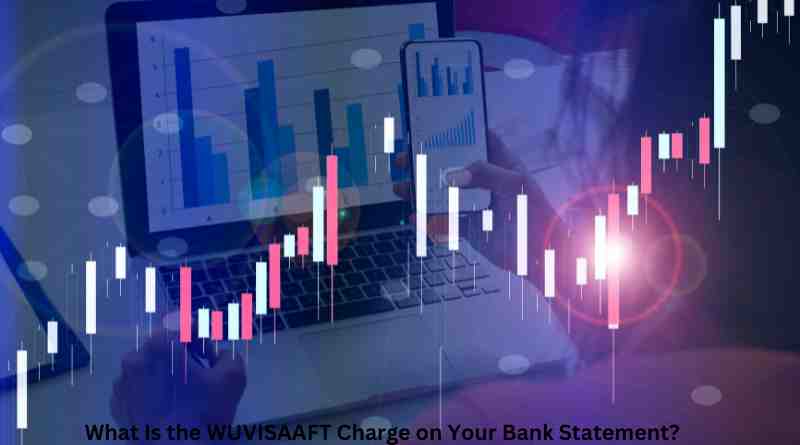What Is the WUVISAAFT Charge on Your Bank Statement?
Introduction
Have you ever scrutinized your bank statement only to come across a puzzling charge labeled “WUVISAAFT”? If so, you’re not alone. Many people find themselves scratching their heads when they encounter this unfamiliar term on their financial records. In this article, we’ll delve into the meaning of the WUVISAAFT charge, what it signifies, and what steps you can take to address it if you find it on your bank statement.
This Blog Will Show You About the New Digital Technology in Thailand
Understanding WUVISAAFT
The acronym “WUVISAAFT” may seem cryptic at first glance, but it typically stands for a specific transaction or charge processed by a financial institution. While the exact meaning may vary depending on the context and the policies of the bank in question, WUVISAAFT charges often relate to electronic fund transfers, fees, or other financial transactions.
Possible Explanations for WUVISAAFT Charges
- Electronic Funds Transfer: In some cases, the WUVISAAFT charge may represent an electronic funds transfer between accounts. This could occur when you transfer money from one account to another, either within the same bank or to an external institution.
- Banking Fees: Banks frequently levy various fees for services rendered or account maintenance. The WUVISAAFT charge could be associated with such fees, including overdraft charges, wire transfer fees, or account service fees.
- Merchant Transactions: Another possibility is that the WUVISAAFT charge corresponds to a transaction made with a merchant. When you use your debit or credit card to make a purchase, the merchant’s payment processor may generate a code or description that appears as WUVISAAFT on your bank statement.
- errordomain=nscocoaerrordomain&errormessage=could not find the specified shortcut.&errorcode=4
What to Do If You Encounter WUVISAAFT Charges
If you come across WUVISAAFT charges on your bank statement and are unsure about their origin or validity, it’s essential to take proactive steps to address the issue.
- Review Your Recent Transactions: Start by reviewing your recent transactions to identify any corresponding payments or purchases that might explain the WUVISAAFT charge. Look for receipts, invoices, or confirmation emails that can help you pinpoint the source of the transaction.
- Contact Your Bank: If you’re unable to determine the nature of the WUVISAAFT charge on your own, reach out to your bank for clarification. Customer service representatives can provide insights into the transaction and assist you in resolving any discrepancies or concerns.
- Dispute Unauthorized Charges: If you suspect that the WUVISAAFT charge is unauthorized or fraudulent, promptly notify your bank and initiate the dispute process. Most financial institutions have protocols in place for handling disputed transactions and can investigate the matter on your behalf.
Conclusion
In conclusion, encountering a WUVISAAFT charge on your bank statement may initially seem perplexing, but it typically represents a legitimate financial transaction or fee. By understanding the possible explanations for WUVISAAFT charges and taking proactive steps to address any concerns, you can ensure that your financial records remain accurate and secure. If you ever have questions or uncertainties regarding charges on your bank statement, don’t hesitate to reach out to your bank for assistance.
Frequently Asked Questions About WUVISAAFT Charges
- What does WUVISAAFT stand for?
WUVISAAFT is an acronym that typically represents a specific transaction or charge processed by a financial institution. While the exact meaning may vary, it often relates to electronic fund transfers, banking fees, or merchant transactions.
- Why do I see WUVISAAFT charges on my bank statement?
You may encounter WUVISAAFT charges on your bank statement for various reasons, including electronic funds transfers between accounts, banking fees such as overdraft charges or wire transfer fees, or transactions made with merchants using your debit or credit card.
- Can I dispute a WUVISAAFT charge on my bank statement?
Yes, if you believe that a WUVISAAFT charge is unauthorized or fraudulent, you have the right to dispute it with your bank. Contact your bank’s customer service department promptly to initiate the dispute process and request an investigation into the transaction.
- How can I determine the source of a WUVISAAFT charge?
To identify the origin of a WUVISAAFT charge, start by reviewing your recent transactions for corresponding payments or purchases. Look for receipts, invoices, or confirmation emails that can provide clues about the nature of the transaction and help you understand why the charge appeared on your bank statement.
- Are WUVISAAFT charges always legitimate?
While WUVISAAFT charges typically represent legitimate financial transactions or fees, it’s essential to review your bank statement carefully and verify the accuracy of each charge. If you encounter a WUVISAAFT charge that you don’t recognize or believe to be erroneous, don’t hesitate to contact your bank for clarification and resolution.
Read also: check

Post Comment